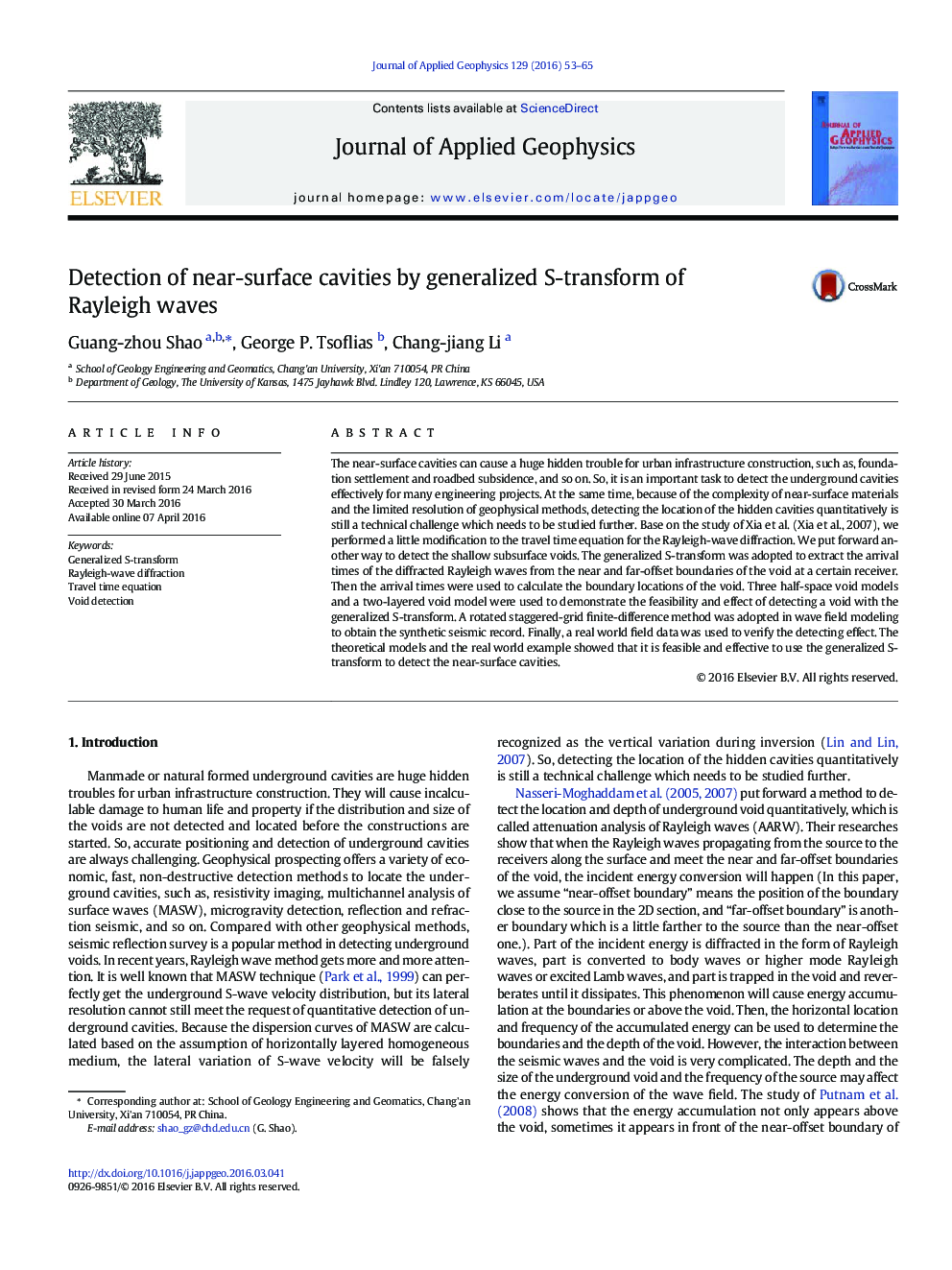| کد مقاله | کد نشریه | سال انتشار | مقاله انگلیسی | نسخه تمام متن |
|---|---|---|---|---|
| 4739829 | 1641122 | 2016 | 13 صفحه PDF | دانلود رایگان |

• Base on the study of Jianghai Xia et al. (Xia et al., 2007), we put forward another way to use the generalized S-transform of Rayleigh waves to detect the shallow subsurface voids.
• The arrival times of the diffracted Rayleigh waves from the near and far-offset boundaries of the void, which are extracted by the generalized S-transform, are used to calculate the boundary locations of the void.
• The theoretical models and the real world example showed that it is feasible and effective to use the generalized S transform to detect the near-surface cavities.
The near-surface cavities can cause a huge hidden trouble for urban infrastructure construction, such as, foundation settlement and roadbed subsidence, and so on. So, it is an important task to detect the underground cavities effectively for many engineering projects. At the same time, because of the complexity of near-surface materials and the limited resolution of geophysical methods, detecting the location of the hidden cavities quantitatively is still a technical challenge which needs to be studied further. Base on the study of Xia et al. (Xia et al., 2007), we performed a little modification to the travel time equation for the Rayleigh-wave diffraction. We put forward another way to detect the shallow subsurface voids. The generalized S-transform was adopted to extract the arrival times of the diffracted Rayleigh waves from the near and far-offset boundaries of the void at a certain receiver. Then the arrival times were used to calculate the boundary locations of the void. Three half-space void models and a two-layered void model were used to demonstrate the feasibility and effect of detecting a void with the generalized S-transform. A rotated staggered-grid finite-difference method was adopted in wave field modeling to obtain the synthetic seismic record. Finally, a real world field data was used to verify the detecting effect. The theoretical models and the real world example showed that it is feasible and effective to use the generalized S-transform to detect the near-surface cavities.
Journal: Journal of Applied Geophysics - Volume 129, June 2016, Pages 53–65